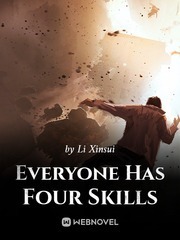v3 Chapter 266: Arms dealers make a lot of money
On August 16, 1866, the latest world peace research report of the Amsterdam Institute of Peace, which has world influence, was released on this day. Once it appeared, it was immediately reprinted in the world's major newspapers on the 17th.
The report caused a huge stir.
This report points out that the wars that are taking place in European and American countries now, whether it is from the Pudan War or the Austro-Prussian War in previous years, or the African Colonial War, the Balkan Peninsula War, the North American War, etc., behind a series of wars. , There are weapons suppliers. The article also takes the United Kingdom as an example. The United Kingdom launched a war in southern Africa. The local weapons suppliers made a lot of money, but the dead soldiers of the war are forever buried in South Africa. .
With the end of the war in South Africa, the United Kingdom entered a period of peace without war, but the arms dealers were unwilling. After all, they went to the arms market. Therefore, in the end, the arms dealers promoted the war in the Balkans and participated in the war in North America. There are these two places. to fill the lost South African market
Even, in Europe and the world, new markets are being developed by these countries' arms dealers, which the report explains are driving new wars to take shape.
Robio, the author of the report and the first researcher of the institute, cited the war between the Ottoman Empire and the Tsarist Russia because the UK entered the war not only because the Tsarist Russia invaded the Balkans, but also because the UK’s influence was compressed. , the report pointed out that this is just a false proposition, because Constantinople is there to block the Tsarist Russia south, unless the Tsarist Empire really destroys the Ottoman Empire with more than 20 million, otherwise it is difficult to imagine that the Tsarist Empire can into the Mediterranean Sea.
Therefore, the result of the intertwining of many factors is mainly the geopolitical competition of major powers, especially the influence of the British and the Tsarist Russian Empire in the Balkan Peninsula, and behind the wrestling there are arms dealers.
The British navy is the protagonist of the British arms dealer, but the army is naturally unwilling to play only a small role, so the arms dealer equipped by the army is the driving force behind this round of war.
To point it out, the report's experts are concerned that the annual global arms trade is approaching £50 million (1.25 billion guilders), and the report says that over the past five years (referring to 1861-1865) Europe and the Americas are still The main weapons purchasers, the Ottoman Empire in the Near East and the Siamese Empire in the Far East are also good participants, and even the Persian Empire did not choose to join as a weapon buyer.
The United States of America, the Confederate States of America, the Kingdom of Prussia, the British Empire, the Tsarist Russia Empire, and the Austrian Empire (later Austria-Hungary) have become the six largest arms buying countries and regions in the world.
It even surpassed the French Empire, which ranked seventh with few major battles.
Followed by the eighth to tenth is the Kingdom of the Netherlands, the Kingdom of Portugal, the Ottoman Empire.
The 11th to 20th places are the Kingdom of Argentina, the Kingdom of Spain, the Kingdom of Italy, the Kingdom of Denmark, the Kingdom of Sweden, the Kingdom of Brazil, the Kingdom of Siam, the Kingdom of Greece, Colombia, and Venezuela.
After that, the 21st to 27th places are the Kingdom of Belgium, the Persian Empire, Burma, Paraguay, Chile, Ecuador, Riben and other countries.
That's right, it was not long before ri started to open to the outside world, and he was even learning the good foreign policy of the Kingdom of Siam (the predecessor of Thailand, Laos, and Cambodia), which can be regarded as crossing the river by feeling the stones, but many What people don't know is that with the Meiji Restoration, which is now being promoted, this now poor and conservative country has become out of control. In just half a century, it has become a powerful country in the Far East, and after 1905 The Far East defeated the Tsarist Empire, made a sensation in Europe and the United States, and became a heavyweight player in the world hegemony. This is history and something else.
The top six arms-buying countries over the past five years represent a 55% share of global arms purchases.
The following 7th to 10th places are 13%, and the latter 17th occupy more than 25% of the share.
In terms of individual countries, because of the Civil War in North America, the United States of America accounted for the most, accounting for 12%, while the Confederate States of America accounted for 8%. The arms trade, which accounts for one-fifth of the world's trade, is terrifying.
The North and South have spent a total of £10m a year and £50m of weapons over five years.
"The gladiatorial fights in Europe are the same, but in the Americas, in addition to North America, now South America is the new hot spot," said Russmann, the institute's second senior fellow and co-author of the latest report from the Amsterdam Institute for Peace. The countries of the Americas are going to increase their military spending. Not bit by bit, but a huge increase. The countries there are obviously aware that they need to face the instability of the surrounding situation like European countries, so they need to spend money on weapons to maintain their own security. The environment, intimidating other countries not to target their own country, so they need to buy a lot of weapons."
In his view, the Balkan Peninsula war has caused European countries to change their defensive stance, not to mention other countries, even the Greek Kingdom, which was known for its peace before, also after the Balkan Peninsula war, William III asked the Greek cabinet government to increase the purchase of weapons , to increase the defense capacity of Greece.
This is the case with Greece, not to mention other countries. Denmark has increased its annual military expenditure by more than 50% compared with that before the Pudan War.
The same goes for Portugal and Italy.
Seeing this, South America was even more afraid that Europe would invade South America again, so they increased their military expenditures and sought self-protection at one time.
This is backlashing back to Europe. Naturally, the major powers will not let these small countries be prejudicial and threaten themselves, not to mention that the big powers did have ambitions.
These measures have aroused the desire to buy arms in various countries Arms has become a sought-after commodity, and countries have increased their defense expenditures and orders are flying.
As a result, major countries have also increased their budgets a lot.
Robbio, the first researcher of the Amsterdam Institute for Peace, said, "This has brought huge business orders to arms dealers in various countries, and manufacturers of major military powers have seized orders from all over the world.
And we, the Amsterdam Peace Research Institute, have added a project after discovering this situation last year in 1865, that is, the major arms importing and exporting countries. "
As a result, a list of military importers and exporters was added this year, he noted.
From 1861 to 1865, the largest arms importer was the Confederate States of America. Due to its economic strength and industrial capacity, which was different from that of the North, it could manufacture weapons such as guns and warships. Most of the weapons used in the Civil War in the South were imported. For the most part, according to the Institute, Britain spent 70% of the £20m in military purchases from the Confederate States of America over the five-year period, taking £14m of orders.
There are other......
The report caused a huge stir.
This report points out that the wars that are taking place in European and American countries now, whether it is from the Pudan War or the Austro-Prussian War in previous years, or the African Colonial War, the Balkan Peninsula War, the North American War, etc., behind a series of wars. , There are weapons suppliers. The article also takes the United Kingdom as an example. The United Kingdom launched a war in southern Africa. The local weapons suppliers made a lot of money, but the dead soldiers of the war are forever buried in South Africa. .
With the end of the war in South Africa, the United Kingdom entered a period of peace without war, but the arms dealers were unwilling. After all, they went to the arms market. Therefore, in the end, the arms dealers promoted the war in the Balkans and participated in the war in North America. There are these two places. to fill the lost South African market
Even, in Europe and the world, new markets are being developed by these countries' arms dealers, which the report explains are driving new wars to take shape.
Robio, the author of the report and the first researcher of the institute, cited the war between the Ottoman Empire and the Tsarist Russia because the UK entered the war not only because the Tsarist Russia invaded the Balkans, but also because the UK’s influence was compressed. , the report pointed out that this is just a false proposition, because Constantinople is there to block the Tsarist Russia south, unless the Tsarist Empire really destroys the Ottoman Empire with more than 20 million, otherwise it is difficult to imagine that the Tsarist Empire can into the Mediterranean Sea.
Therefore, the result of the intertwining of many factors is mainly the geopolitical competition of major powers, especially the influence of the British and the Tsarist Russian Empire in the Balkan Peninsula, and behind the wrestling there are arms dealers.
The British navy is the protagonist of the British arms dealer, but the army is naturally unwilling to play only a small role, so the arms dealer equipped by the army is the driving force behind this round of war.
To point it out, the report's experts are concerned that the annual global arms trade is approaching £50 million (1.25 billion guilders), and the report says that over the past five years (referring to 1861-1865) Europe and the Americas are still The main weapons purchasers, the Ottoman Empire in the Near East and the Siamese Empire in the Far East are also good participants, and even the Persian Empire did not choose to join as a weapon buyer.
The United States of America, the Confederate States of America, the Kingdom of Prussia, the British Empire, the Tsarist Russia Empire, and the Austrian Empire (later Austria-Hungary) have become the six largest arms buying countries and regions in the world.
It even surpassed the French Empire, which ranked seventh with few major battles.
Followed by the eighth to tenth is the Kingdom of the Netherlands, the Kingdom of Portugal, the Ottoman Empire.
The 11th to 20th places are the Kingdom of Argentina, the Kingdom of Spain, the Kingdom of Italy, the Kingdom of Denmark, the Kingdom of Sweden, the Kingdom of Brazil, the Kingdom of Siam, the Kingdom of Greece, Colombia, and Venezuela.
After that, the 21st to 27th places are the Kingdom of Belgium, the Persian Empire, Burma, Paraguay, Chile, Ecuador, Riben and other countries.
That's right, it was not long before ri started to open to the outside world, and he was even learning the good foreign policy of the Kingdom of Siam (the predecessor of Thailand, Laos, and Cambodia), which can be regarded as crossing the river by feeling the stones, but many What people don't know is that with the Meiji Restoration, which is now being promoted, this now poor and conservative country has become out of control. In just half a century, it has become a powerful country in the Far East, and after 1905 The Far East defeated the Tsarist Empire, made a sensation in Europe and the United States, and became a heavyweight player in the world hegemony. This is history and something else.
The top six arms-buying countries over the past five years represent a 55% share of global arms purchases.
The following 7th to 10th places are 13%, and the latter 17th occupy more than 25% of the share.
In terms of individual countries, because of the Civil War in North America, the United States of America accounted for the most, accounting for 12%, while the Confederate States of America accounted for 8%. The arms trade, which accounts for one-fifth of the world's trade, is terrifying.
The North and South have spent a total of £10m a year and £50m of weapons over five years.
"The gladiatorial fights in Europe are the same, but in the Americas, in addition to North America, now South America is the new hot spot," said Russmann, the institute's second senior fellow and co-author of the latest report from the Amsterdam Institute for Peace. The countries of the Americas are going to increase their military spending. Not bit by bit, but a huge increase. The countries there are obviously aware that they need to face the instability of the surrounding situation like European countries, so they need to spend money on weapons to maintain their own security. The environment, intimidating other countries not to target their own country, so they need to buy a lot of weapons."
In his view, the Balkan Peninsula war has caused European countries to change their defensive stance, not to mention other countries, even the Greek Kingdom, which was known for its peace before, also after the Balkan Peninsula war, William III asked the Greek cabinet government to increase the purchase of weapons , to increase the defense capacity of Greece.
This is the case with Greece, not to mention other countries. Denmark has increased its annual military expenditure by more than 50% compared with that before the Pudan War.
The same goes for Portugal and Italy.
Seeing this, South America was even more afraid that Europe would invade South America again, so they increased their military expenditures and sought self-protection at one time.
This is backlashing back to Europe. Naturally, the major powers will not let these small countries be prejudicial and threaten themselves, not to mention that the big powers did have ambitions.
These measures have aroused the desire to buy arms in various countries Arms has become a sought-after commodity, and countries have increased their defense expenditures and orders are flying.
As a result, major countries have also increased their budgets a lot.
Robbio, the first researcher of the Amsterdam Institute for Peace, said, "This has brought huge business orders to arms dealers in various countries, and manufacturers of major military powers have seized orders from all over the world.
And we, the Amsterdam Peace Research Institute, have added a project after discovering this situation last year in 1865, that is, the major arms importing and exporting countries. "
As a result, a list of military importers and exporters was added this year, he noted.
From 1861 to 1865, the largest arms importer was the Confederate States of America. Due to its economic strength and industrial capacity, which was different from that of the North, it could manufacture weapons such as guns and warships. Most of the weapons used in the Civil War in the South were imported. For the most part, according to the Institute, Britain spent 70% of the £20m in military purchases from the Confederate States of America over the five-year period, taking £14m of orders.
There are other......







